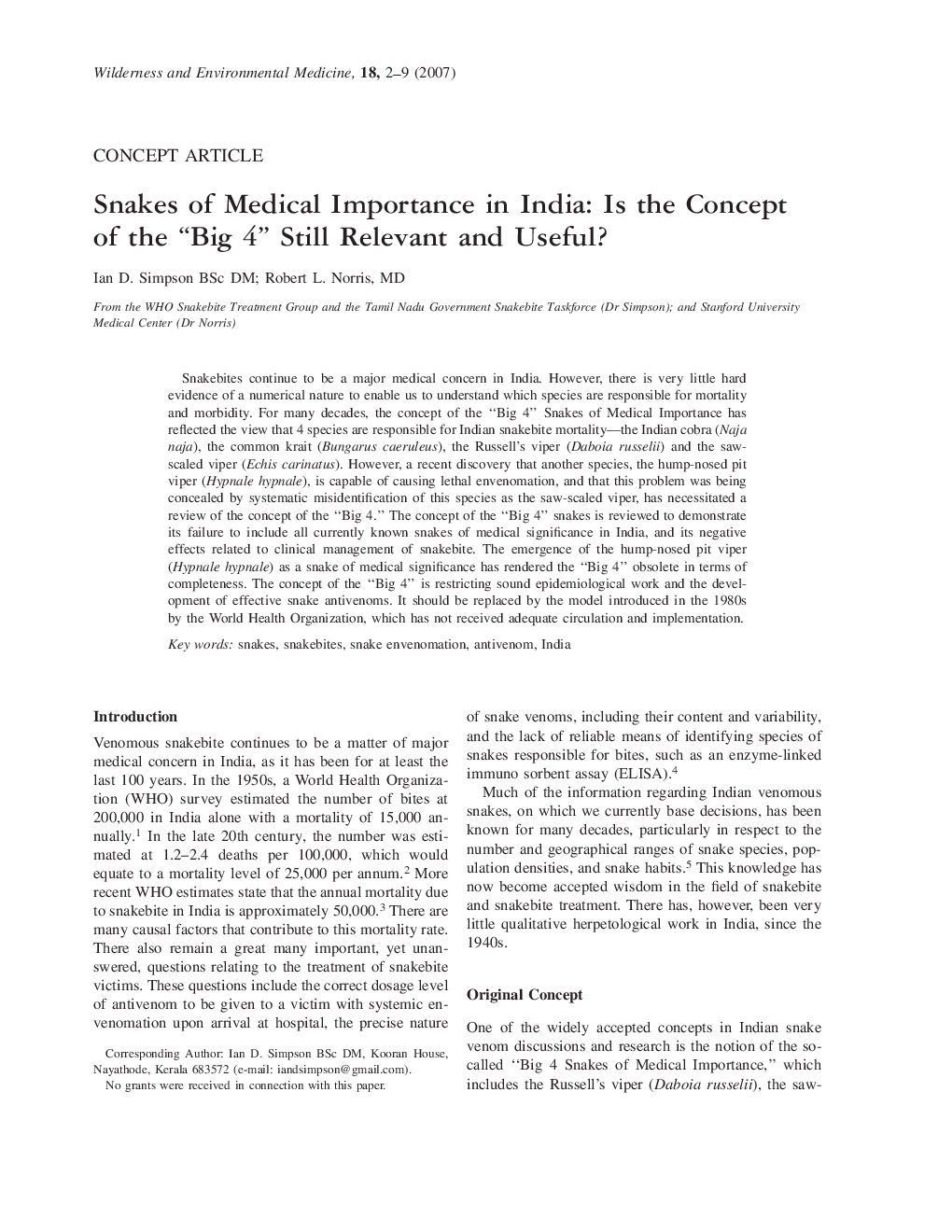| Article ID | Journal | Published Year | Pages | File Type |
|---|---|---|---|---|
| 2615537 | Wilderness & Environmental Medicine | 2007 | 8 Pages |
Snakebites continue to be a major medical concern in India. However, there is very little hard evidence of a numerical nature to enable us to understand which species are responsible for mortality and morbidity. For many decades, the concept of the “Big 4” Snakes of Medical Importance has reflected the view that 4 species are responsible for Indian snakebite mortality—the Indian cobra (Naja naja), the common krait (Bungarus caeruleus), the Russell's viper (Daboia russelii) and the saw-scaled viper (Echis carinatus). However, a recent discovery that another species, the hump-nosed pit viper (Hypnale hypnale), is capable of causing lethal envenomation, and that this problem was being concealed by systematic misidentification of this species as the saw-scaled viper, has necessitated a review of the concept of the “Big 4.” The concept of the “Big 4” snakes is reviewed to demonstrate its failure to include all currently known snakes of medical significance in India, and its negative effects related to clinical management of snakebite. The emergence of the hump-nosed pit viper (Hypnale hypnale) as a snake of medical significance has rendered the “Big 4” obsolete in terms of completeness. The concept of the “Big 4” is restricting sound epidemiological work and the development of effective snake antivenoms. It should be replaced by the model introduced in the 1980s by the World Health Organization, which has not received adequate circulation and implementation.
